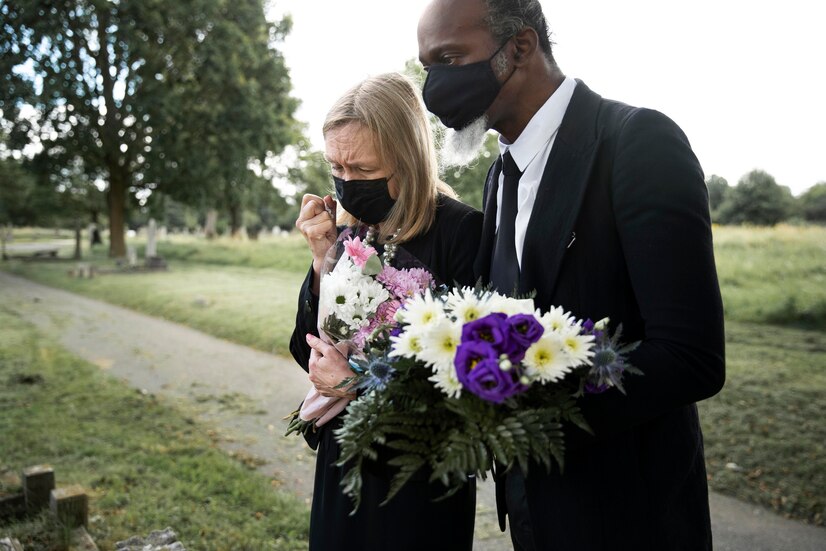Celebrating a loved one’s life can be a deeply moving and uplifting experience. An alternative to a traditional funeral, a celebration of life focuses on the joy and memories shared with the deceased, creating a personalised and positive tribute.
This type of ceremony can be tailored to reflect the individual’s personality and passions, providing a comforting way for family and friends to honour their memory. In this post, we will guide you through the steps of planning a celebration of life, from the initial stages to the day of the event, ensuring a meaningful and heartfelt tribute.
Understanding a Celebration of Life
A celebration of life is a ceremony that honours the deceased by focusing on their life rather than their death. Unlike traditional funerals, which can have a more sombre tone, celebrations of life are often joyful and personalised, highlighting the positive impact the person had on others.
These ceremonies can include stories, music, and activities that reflect the deceased’s interests and character. By celebrating the life lived rather than mourning the loss, these events provide an uplifting environment for loved ones to share memories and find comfort.
Initial Planning Steps
The first step in planning a celebration of life is deciding on the tone and theme. Consider whether the event will be joyful and lively or more reflective. Choose a theme that resonates with the deceased’s hobbies, achievements, or personality traits.
Next, select a date and venue. The location can be a significant place to the deceased, such as a favourite park, beach, or their home. Ensure the date allows ample time for guests to make arrangements to attend.
Creating a guest list is another crucial step. Invite family, friends, colleagues, and anyone else who shared a meaningful connection with the deceased. This ensures that all who were touched by their life can participate in the celebration.
Personalising the Ceremony
Personalising the ceremony is key to making it special. Encourage guests to share memories, whether through an open mic session, video tributes, or a memory board where they can post notes and photos. It is easy to have professional photos using photo editing free resource.
Music and readings should reflect the deceased’s preferences and personality. Choose songs and texts that they loved or that remind people of them. Live music, such as a favourite band or a soloist, can add a personal touch.
Visual displays, like photo collages or slideshows, help to share the story of their life visually. Create a memorabilia table with items that were important to them, such as awards, hobbies, or personal collections. This allows guests to connect with the deceased on a deeper level and recall fond memories.
Ceremony Activities
Incorporating activities into the ceremony can make it more interactive and memorable. Eulogies and speeches are central components; select individuals who knew the deceased well and can speak about their life and impact.
Symbolic actions, such as lighting candles, planting a tree, or releasing balloons or lanterns, provide a meaningful way for attendees to say goodbye and honour their loved one.
Interactive elements like memory jars, where guests can write down and share their memories, or DIY crafts that guests can contribute to, also add a personal and participatory aspect to the ceremony.
Practical Considerations
Budgeting is essential to ensure the celebration is both meaningful and manageable. Allocate funds for the venue, catering, decorations, and any other essentials. Consider asking family members to contribute if needed.
For catering and refreshments, choose food and drink that the deceased enjoyed or that holds significance. Ensure to accommodate dietary requirements of guests to make everyone comfortable.
Technical requirements, such as sound systems, projectors for slideshows, and live streaming options for those who cannot attend in person, should also be arranged. This ensures that the ceremony runs smoothly and everyone can participate.
Final Touches and On the Day
In the days leading up to the event, finalise preparations by confirming details with vendors and setting up the venue. Assign a celebrant or master of ceremonies to guide the event smoothly, keeping everything on track.
Handling emotions on the day is crucial. Provide support for attendees and create a comforting atmosphere where everyone feels welcome to express their feelings. Having a quiet space for those who need a moment alone can also be beneficial.
By addressing these final touches, you ensure a memorable and heartfelt celebration of your loved one’s life.
Reflecting on the Celebration
Planning a celebration of life can be a deeply rewarding process, providing a meaningful way to honour a loved one’s memory. By personalising the event and focusing on the positive impact they had, you create a comforting and uplifting experience for all attendees.
Embrace this opportunity to celebrate a life well-lived.



